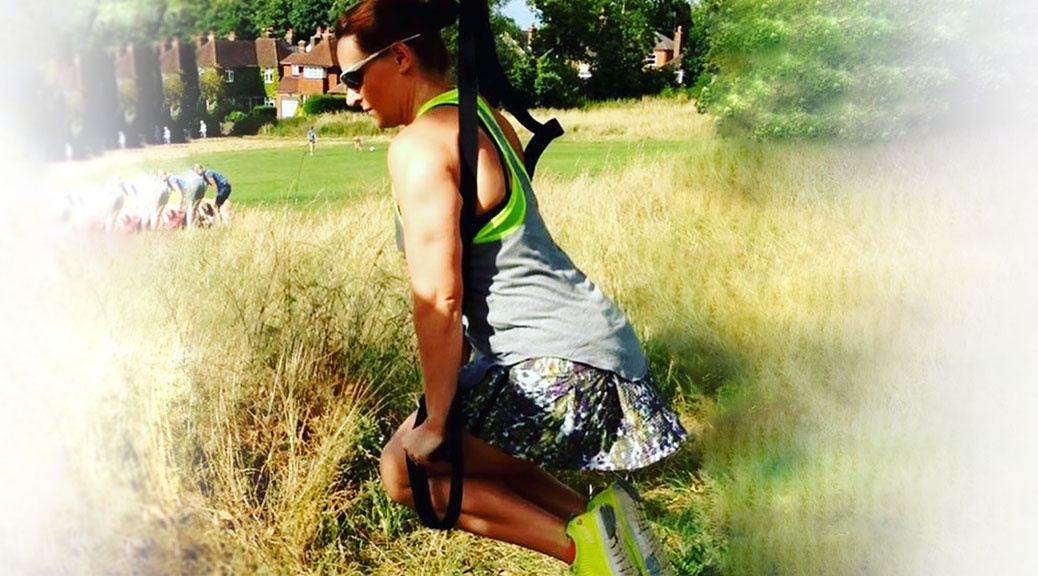With the summer weather finally here, we catch up with three of our FitPro trainer team to find out which movements get them excited to go and train outdoors. Whatever your discipline, get to know these fun movements and challenge your fitness.
Lee Valentine does HIIT
On some occasions, trainer Lee Valentine finds himself unable to get to the gym. Therefore, he often has to put exercises together that will give him what he needs. We don’t always need to be at the gym or in a class to get our quick fix.
Why he likes the movement
“I often play to my strengths when training at home, which for me are power, speed and plyometric exercises. I do this so that I don’t have to think about it and I can go hard and get it done in a short time frame.”
Here, Lee shares his outdoor HIIT workout out in the open at Southmoor park, Abingdon, Oxfordshire.
Warm-up
“A warm-up should consist of jogging (2 sets of 45 seconds), jacks (2 sets of 20), press-ups on the knees (2 sets of 10), bodyweight squats (2 sets of 15) and alternating step back lunges (2 sets of 20). All of which can be performed on the spot and should take around six minutes.”
Exercise one: Fatigue
- Start position is a deep squat (glutes under knees) on the balls of your feet with chest up and hands on opposite shoulders.
- Drop onto hands and simultaneously extend legs and drop hips until body is straight and strong.
- Jump back into starting position.
- This exercise is to be performed at pace and the objective is to keep great form and achieve as many reps as possible in a time frame. Start slow until you are comfortable, then build up pace.
Exercise two: Split knee jumps
- Start position is standing with feet under hips ready to push off both feet.
- Jump up, bringing the left knee up to hip height and simultaneously kicking your right foot up behind you (flexing left hip and right knee).
- Land light with feet under hips (start position).
- Alternate to other side.
- Arms are freestyle.
- Option is a tuck jump as you start to fatigue, as form can be lost very quickly.
Further regression option …
“Alternating knee lifts would be a beginner’s exercise, instead of the split knee jumps. Split knee jumps are not really for people with back or knee issues (obviously). I would get people to practise tucks with a double bounce in between before regressing further as the whole point of this workout is plyometric training.”
Exercise three: Offset plyometric press-ups
- Start position: left arm in triceps press-up position and right arm in wide press-up position. Body holds a strong plank with feet about shoulder-width apart.
- Drop down until both elbows are at 90 degrees.
- Push up quickly, bringing your hands off the ground then, on the landing, land with your right arm in triceps press position and left in wide.
- Option on the knees: walk hands instead of jumping the switch.
“These three exercises should be timed: 30 seconds’ fatigue/10 seconds’ rest; 30 seconds’ split knee jumps/10 seconds’ rest; 30 seconds’ offset plyometric press-ups. Then take a one-minute recovery and repeat two more times (three sets in total). It’s advanced, so I would definitely advise working around any injuries and starting off slower. Count reps on each exercise to monitor progression.”
About the trainer
Lee Valentine has worked in the fitness industry for the past sixteen years, and has just about taught a fitness class in every club in Oxfordshire. Currently, Lee coaches the MOSSA Group Power programmes across the UK. mossa.co.uk
“As a fitness coach I feel it is important to keep up to date with all the latest research and keep moving with this ever changing industry. This is why I love being a part of the Fitpro trainer team. Working alongside some truly inspirational people, learning about all the latest innovative ideas and being able to share them with the world is amazing. We are always on a learning journey.”
Aaron Barnett takes ViPR into the woods
Do you prefer to freestyle your movements? Aaron Barnett gets creative in the woods with the ViPR in Chislehurst, Kent.
Why he likes the movement
“The reason I like these random play moves using ViPR and my bodyweight is that ‘farm strength’ creates a strong body for any challenge that life throws at me, at the drop of a hat.
About the trainer
Aaron Barnett is a Body and Senior technician at LifeLab, Chislehurst. He is deeply passionate about the human design. It excites him to take on the challenge of unlocking your individual potential. Barnett is also a TRIBE Team Training and ViPR coach, delivering quality programming and education worldwide.
Ally Foreman smashes TRX
Do you know the diversity of TRX? Ally Foreman shares the TRX moves she enjoys performing most from Merrow Downs Informal Play Area in Guildford.
Exercise 1: Suspended human pendulum (pecs/deltoids/lats/traps/core)
“This is great, as you aim to keep the body straight while pivoting between a pull- and push-up. You can add modification, such as lifting the leg to make it harder to balance, or incorporating a squat and roll out. It’s great outside as you have plenty of room. Some gyms have TRX rigged to the wall, so you can only work in one direction. This gives you great freedom. The tree movement also adds a slight proprioceptive element, as you have to adjust to it as you move. To make it easier, you can simply start with the handles higher and reduce the range of motion. To increase the difficulty, lengthen the handles to increase the pendulum effect. I suggest starting with five reps and building up to 10, then making the lever more challenging.”
Exercise 2: Suspended triceps push-up variations (triceps/pecs/core/psoas)
“I like this because you can pick between three and six variations and that gives you a whole set. For example, in the video here, you see me do fire-flies, opposite knee to elbow twists, scissors and pikes. This can be modified to be done on the knees as you’ll still feel what’s called ‘the pendulum effect’, or being dragged back. You could make it harder by moving further forwards and increasing the pendulum effect or by upping the reps. Having the hands on the grass gives the user’s body extra feedback, as it is typically uneven. As before, this will slightly increase proprioception and neural involvement of the shoulders and core compared to the flat, even gym floor.”
Exercise 3: Hanging human scale with 180 turn (biceps/pecs/core)
“I love this exercise as it’s fun. The idea is that you stand in the straps of the TRX on one leg with the other free. You then tip back, like a human scale, staying as straight as possible. To come back, you have to pull hard. Because the hands are close together you get a bicep and pec focus as opposed to the back in a more typical row/pull. At the same time as performing the reps, you try and pull harder to one side to cause the TRX and yourself to turn as far as you can in a circle, before it naturally unwinds. So much fun! Reps will depend on individual strength. Start with three to five and build up. You probably couldn’t do this in a gym as a) you’d get yelled at by the staff to get down and b) you need a lot of room!”
Exercise 4: 360 pistol squat/roll out combo (quads, glutes, core)
“This is also fun. With the handles of the TRX set at about shoulder height, hang down underneath the anchor point into a single leg squat (pistol squat). As you come up, reach the hands forwards into a roll out, keeping the body straight. Just as you get back to upright, perform a quarter turn hop. You’ll do four going in the same direction to compete a 360 turn and then unwind the other way with another four reps. You’ll feel how, as the TRX twists and untwists, it tries to drag you, so you have to work pretty hard to stay balanced. It’s super fun and another one you can’t really do in the gym as you need a lot of space around you.”
Exercise 5: Jump up and hang about
“You basically have the handles at shoulder height and tucked in tight to your sides. Jump up, keeping the arms straight by your sides and knees into the belly. Try and hold it. The TRX will spin. You could then add bicycles, knee tucks, twists, triceps dips for the brave, etc. It’s like being a kid again!”
About the trainer
Ally Foreman has been in the fitness business fifteen years. She runs her own personal training company, MoveWell Fitness & Wellbeing. Foreman is also the UK National Trainer for PTA Global, tutoring and assessing all level 3 Certificate in Personal Training courses. She also teaches several of the MOSSA programs, and is a UK national trainer for Group Centergy and Group Core.
We would love to hear how you have got on with these movements! You can tweet us at: fitpro_online or email your progress to: social@fitpro.com
Happy training!







